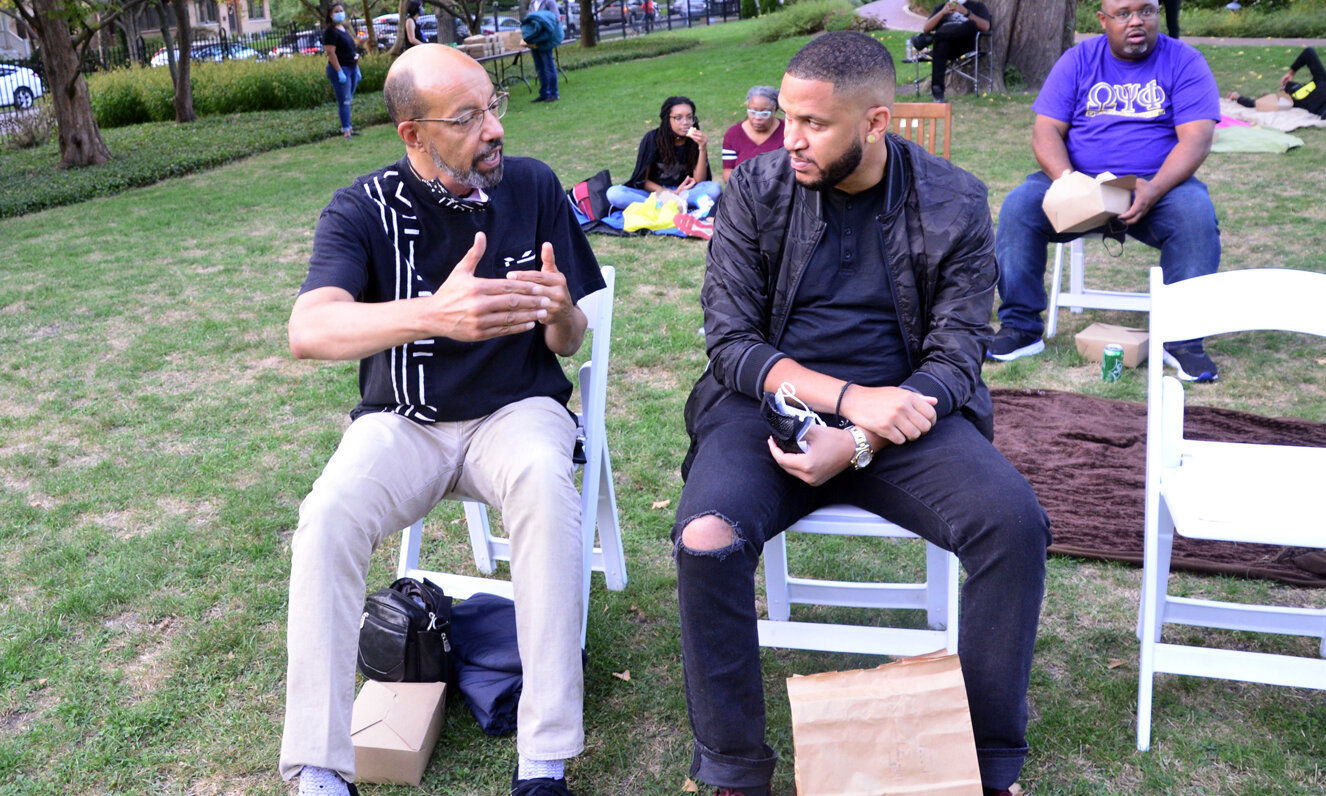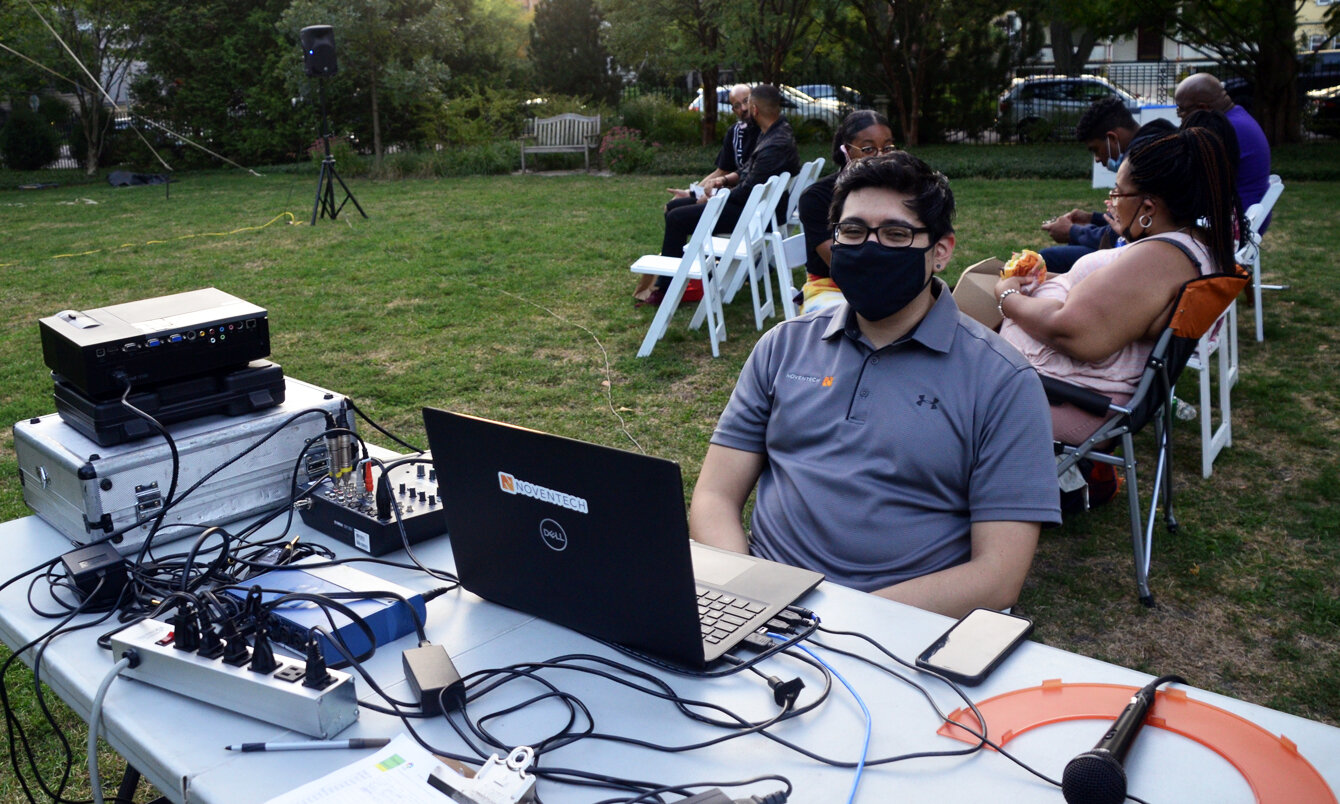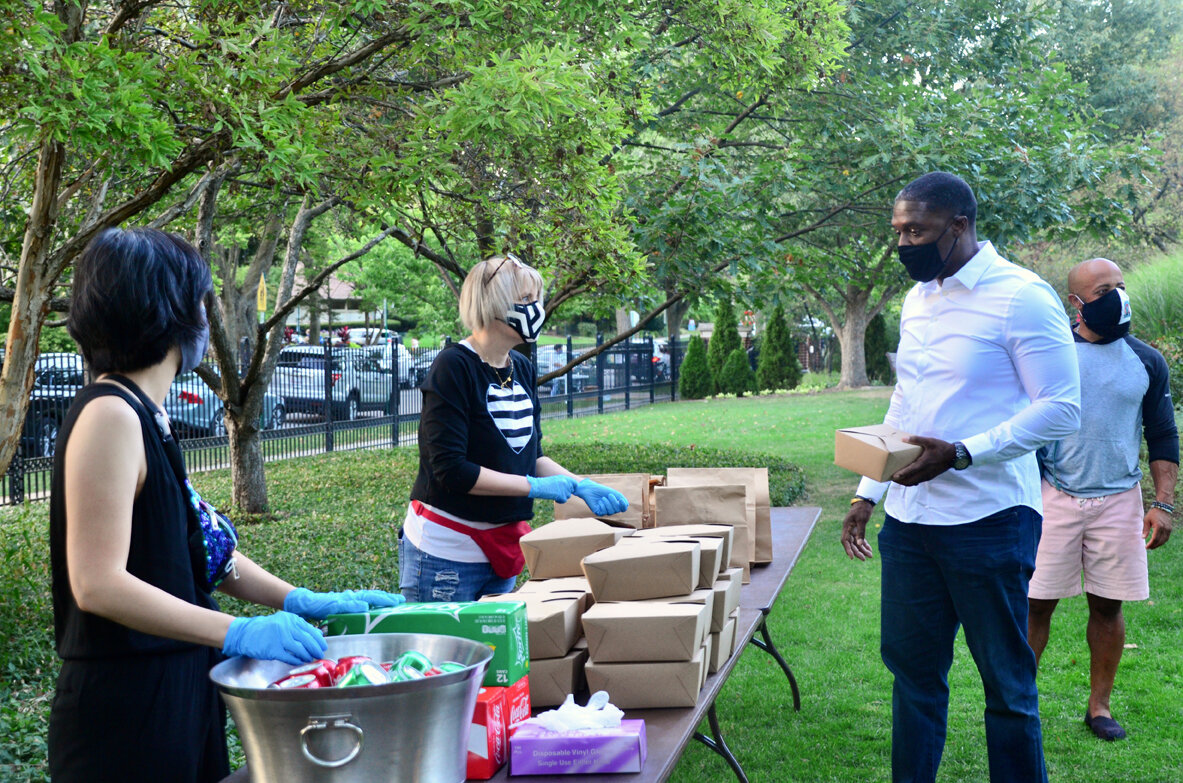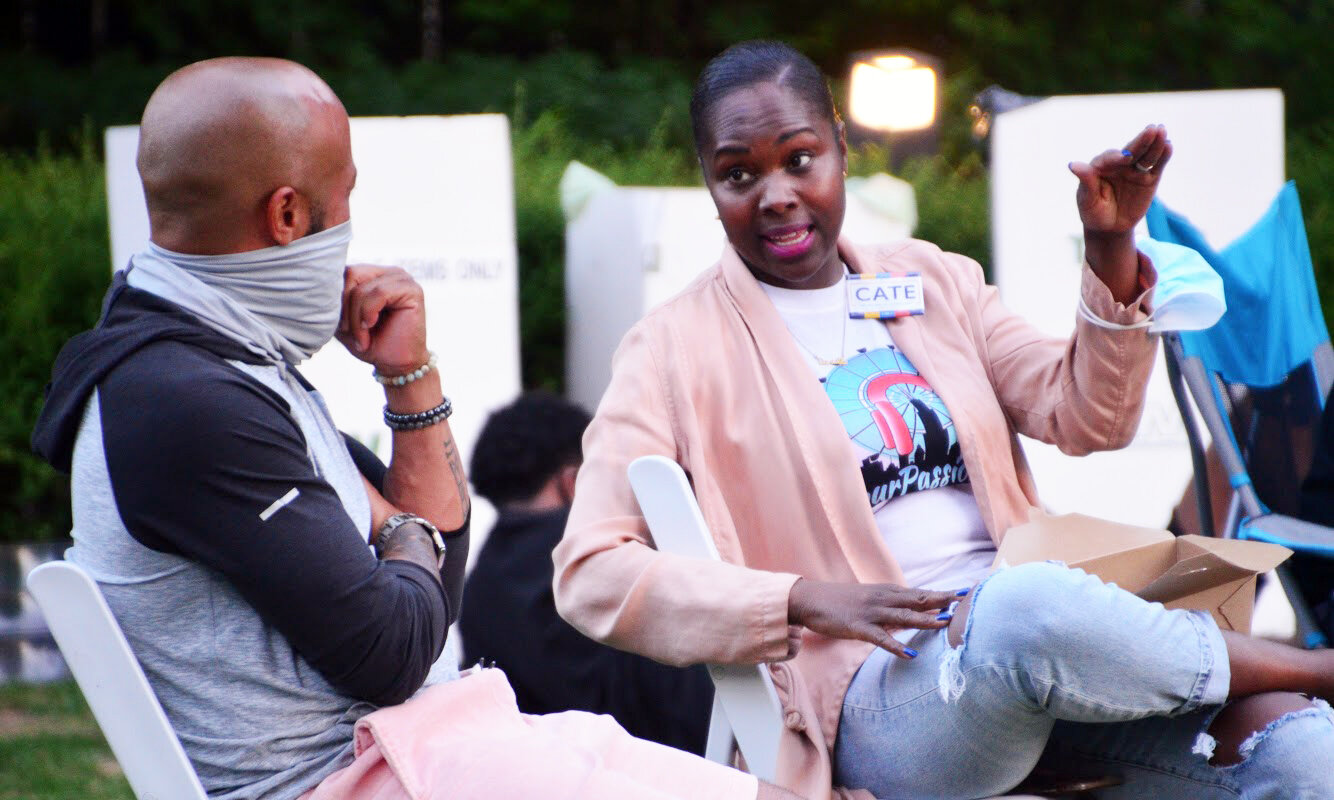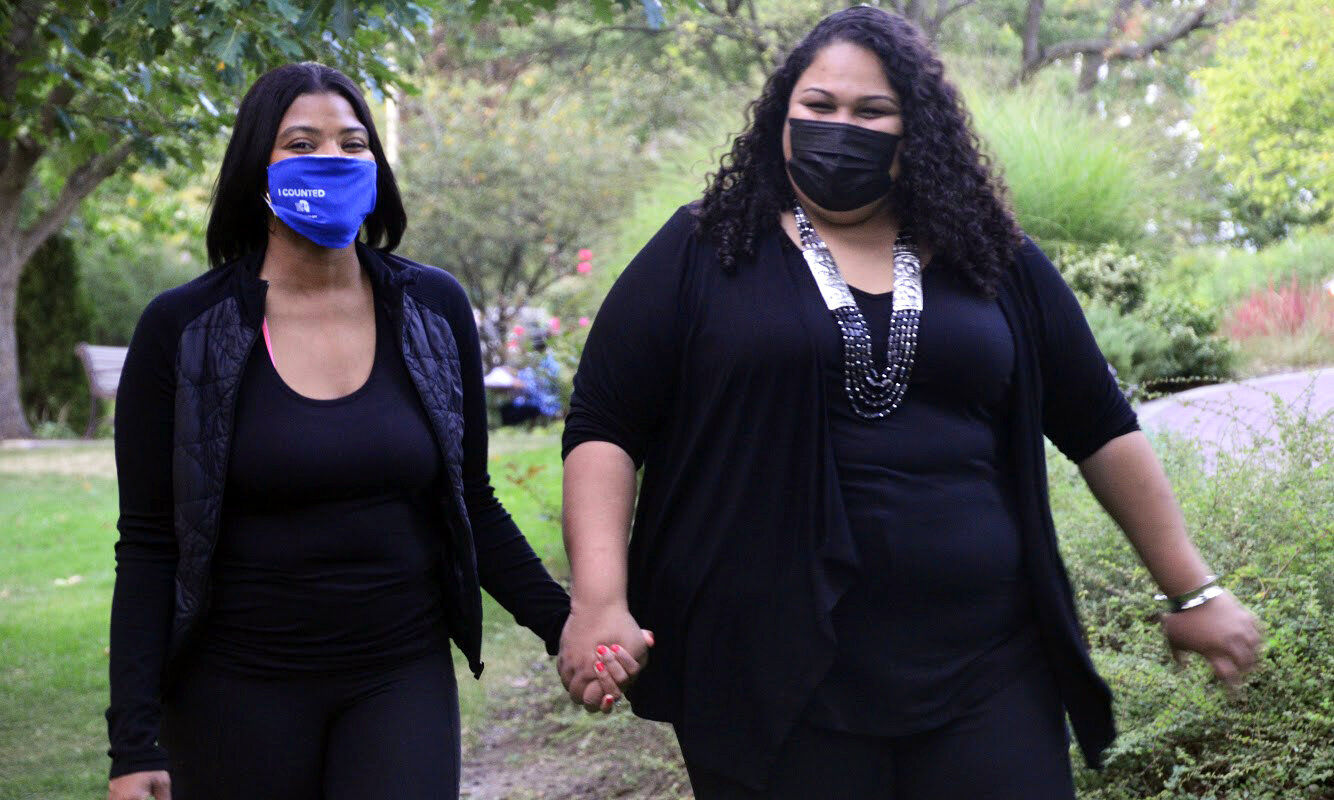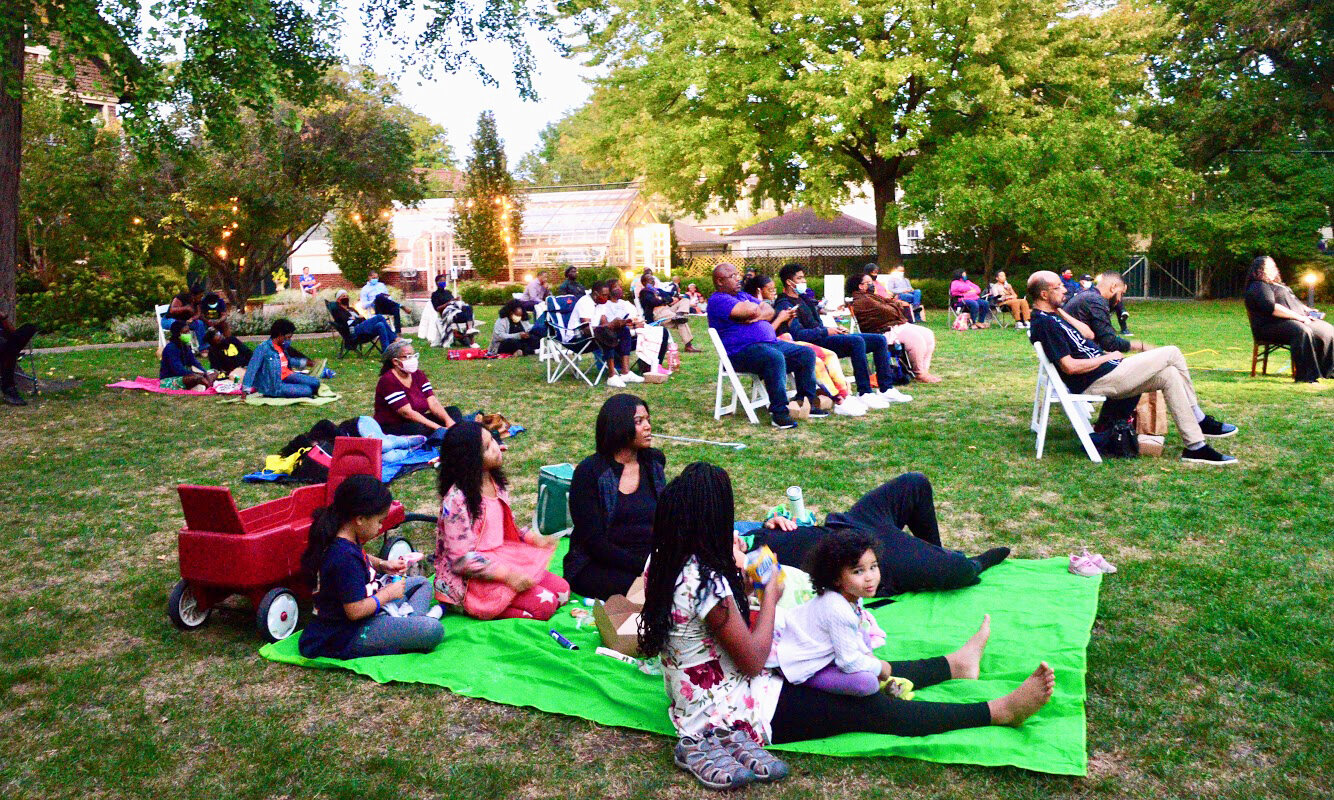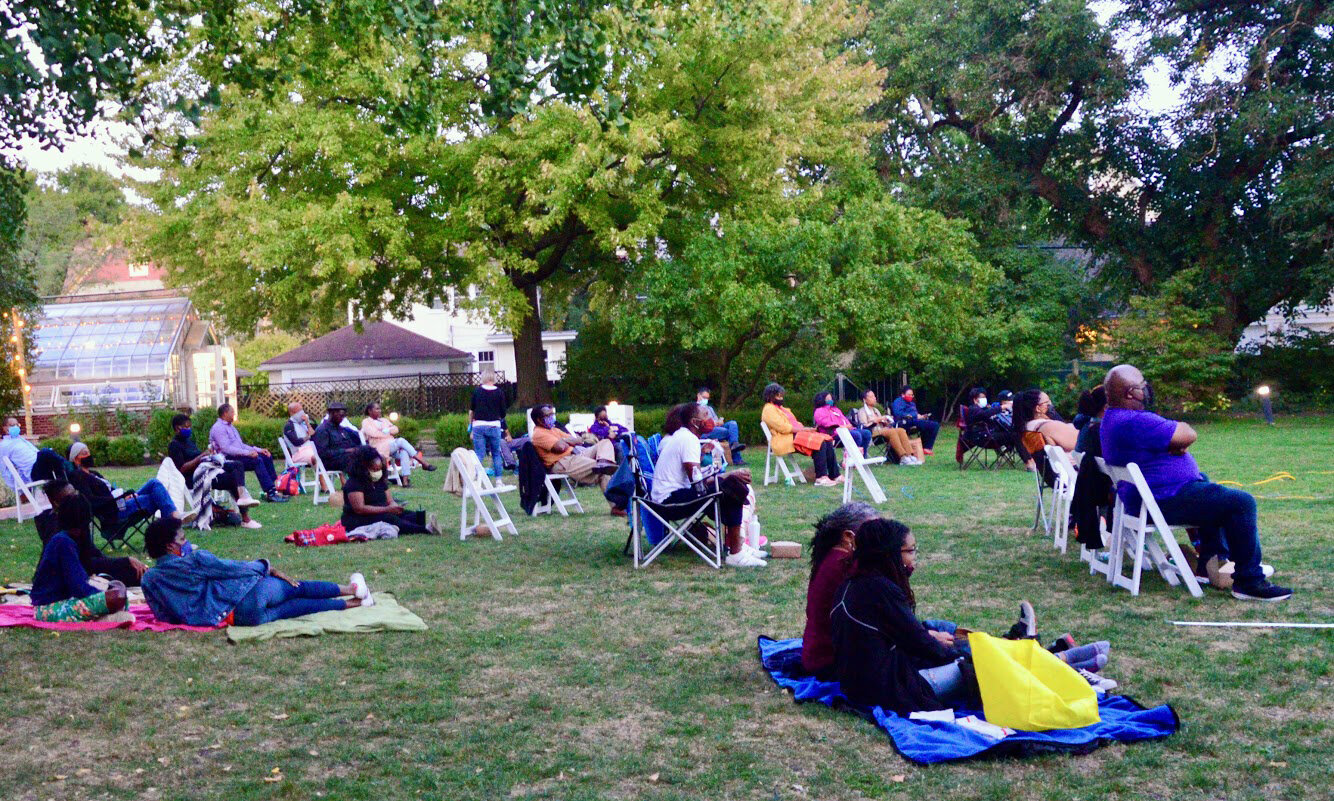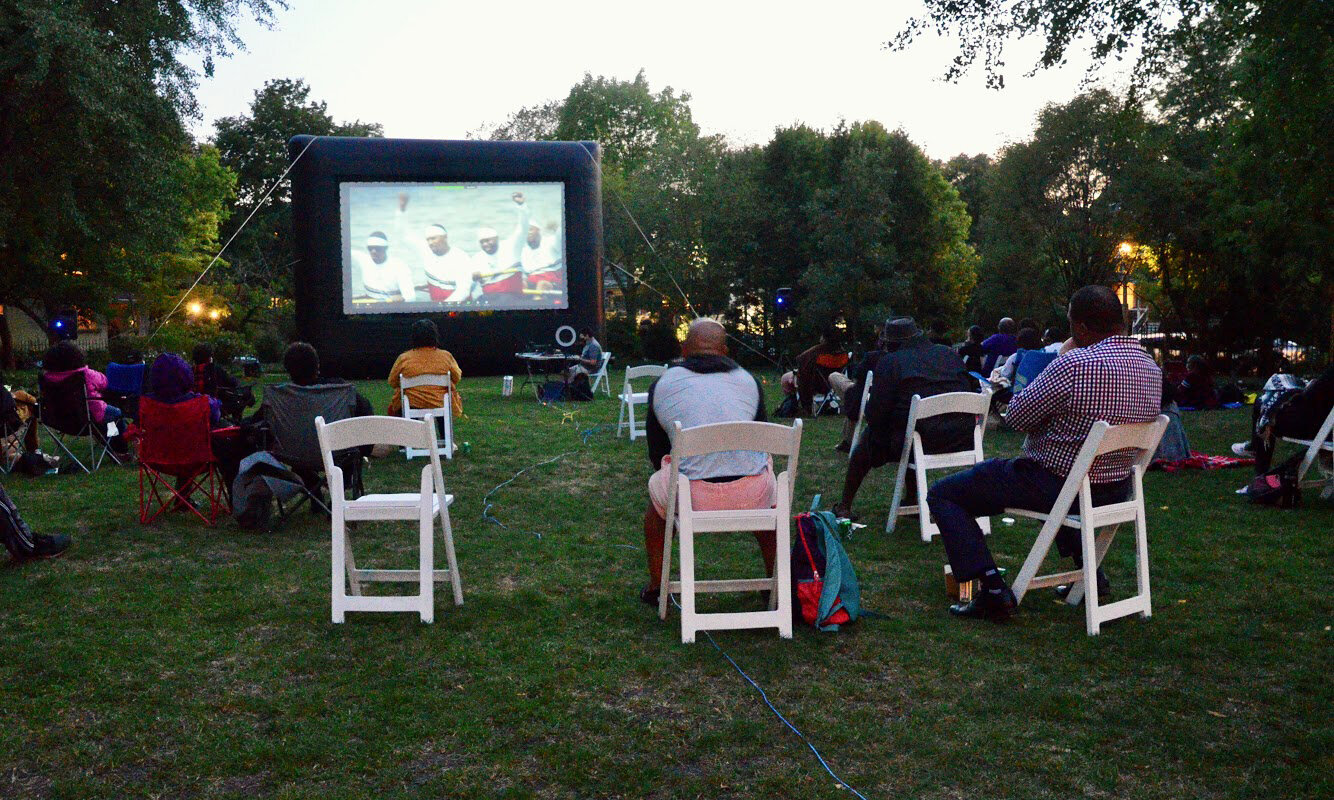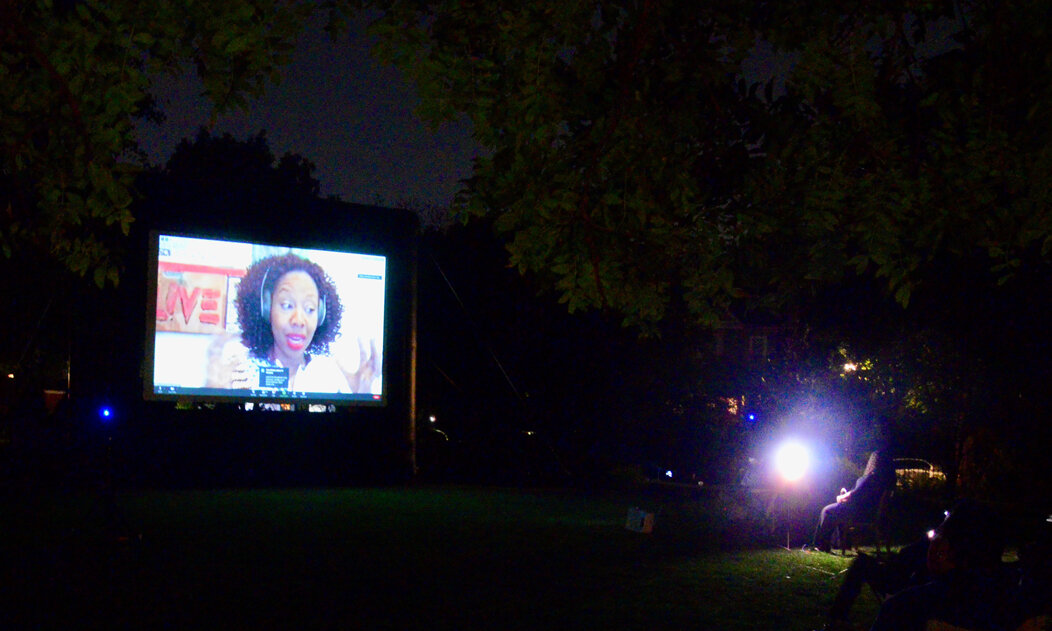While 269 people watched virtually from across the country, “A Most Beautiful Thing” screened simultaneously in person at two locations in Oak Park and Austin on Friday, Sept. 25 (in person events were limited to no more than 50 attendees). Photos above and in gallery below by Cassandra West.
By Cassandra West
On a beautiful evening in late September, Cheney Mansion’s spacious lawn became an outdoor movie theater. It was the perfect location for screening “A Most Beautiful Thing,” a sentimental and moving documentary that chronicles the first African American high school rowing team in this country.
The high school wasn’t any school, mind you. It was Manley Career Academy High School in the East Garfield Park neighborhood on Chicago’s West Side and only a few miles east of that evening’s screening. And while about 50 of us viewed the film in Oak Park, another socially distanced audience was viewing simultaneously in the Austin neighborhood. Others from as far away as Arizona, Colorado, California viewed, too, and joined a post-screening discussion via Zoom that featured Arshay Cooper, a member of the now famous rowing team. His memoir of the same title inspired the film.
We were all together while apart, in essence, an analog to the story we were watching.
“A Most Beautiful Thing” is, at its heart, a story about the common threads that draw us together—even in the face of adversities, differences and the vicissitudes of life.
At times gritty and raw, and uncommonly honest, “A Most Beautiful Thing” presents hard truths about struggles that are invisible to the world beyond East Garfield Park’s boundaries. And, for the young men whose stories the film tells, the chance to step outside of their everyday existence reveals a beauty that they had never imagined even as they dealt with personal and family traumas.
“There was something about the water that gave us peace,” Cooper says. “That was something that we all had never felt before. And we all needed that.”
And that was transformational.
I’ll leave it at that and urge you, if you haven’t already, to view the film yourself. It is well worth your time. Perhaps you will be a little transformed.
The combined efforts of One Earth Film Festival, the Parks Foundation and the Park District of Oak Park made our most beautiful evening possible.
Note: “A Most Beautiful Thing” can be screened at your company, community, organization or school. More information about the film and book is at: https://www.amostbeautifulthing.com/
